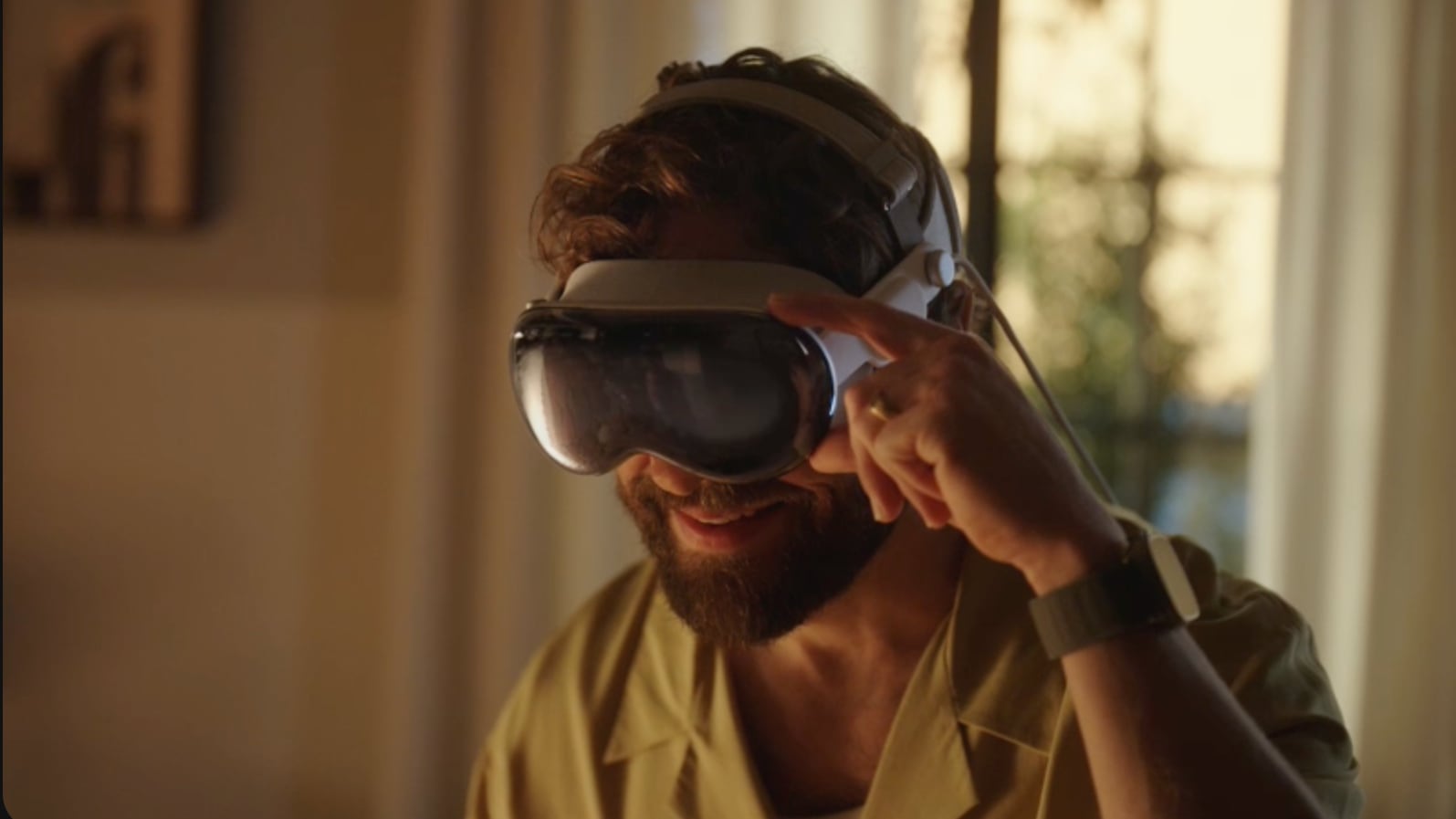My Vision Pro works in exactly the context I had envisaged, as regards its potential as a replacement for a desktop or laptop computer. It has a tiny footprint that allows flexible and convenient use. I also use a foldable bluetooth keyboard with integrated mouse pad, because the natural interface for typing on the Vision Pro is not suitable for volume text - and all too often it is not convenient to rely on dictation. For example when one is not entirely alone. The keyboard fits neatly into the Vision Pro case.
Apple's Vision Pro headset has left many early adopters expressing dissatisfaction over its weight, limited use cases, and sparse software ecosystem, according to a new article from The Wall Street Journal.

In the year following the device's launch, user feedback suggests that it has failed to meet expectations for comfort, software support, and social acceptance. In interviews conducted by The Wall Street Journal, early buyers of the Vision Pro reported that the device now sits largely unused due to a range of practical issues. Dustin Fox, a real estate agent in Centreville, Virginia, said:
He explained that he was initially drawn to the device's novelty and potential productivity benefits, but found the physical experience of wearing the headset unsustainable for extended sessions. The Vision Pro weighs approximately 600 to 650 grams (1.3 to 1.4 pounds), depending on the light seal and headband configuration. This is considerably heavier than typical head-mounted consumer electronics, and the front-heavy distribution has become a recurring complaint.
Tovia Goldstein, a 24-year-old based in New York City, said that his experience watching content on the headset was also limited by discomfort and an insufficient number of apps to make it worthwhile.
When he retrieves the device to investigate any new apps that have been added to the visionOS App Store, he noted the lengthy startup time as a deterrent, citing the need to connect the external battery and wait several minutes before the device is ready to use.
The Vision Pro debuted with high visibility, including a flagship store event in New York City attended by Apple CEO Tim Cook. In the weeks following the launch, users were spotted wearing the headset in public spaces such as malls, restaurants, and sports events, but several buyers said that public enthusiasm quickly diminished.
Fox said that he considered selling his Vision Pro, but resale values had fallen significantly below the original price.
Another early adopter, Anshel Sag, a technology analyst based in San Diego, used the Vision Pro for inflight entertainment but eventually abandoned it due to social discomfort and practicality issues.
The Vision Pro's travel case, sold separately for $199, is also large; it measures in at roughly 12 inches by 9 inches by 6.5 inches.
Anthony Racaniello, a media studio operator from Philadelphia, attempted to use the headset in the workplace and during air travel but experienced both social alienation and practical challenges. During one nearly six-hour flight, he said a flight attendant ignored him during beverage service.
He later sold his Vision Pro for $1,900 — a 46% loss from the original purchase price — and said he did not miss it.
Yam Olisker, a 20-year-old YouTuber from Israel, flew to New York to purchase the Vision Pro at launch and obtained Tim Cook's signature on both his iPhone and the Vision Pro box.
That being said, he does not regret the purchase and enjoys watching movies with his Vision Pro, especially 3D films like Metallica, which he said makes it feel "like you're at the concert." Nevertheless, the weight remains an issue, and he has to lie in bed to mitigate its effect when watching movies.
Although Apple's work on a substantially enhanced Vision Pro model has apparently stalled, there are strong indications that the company will release "an incremental update to the product with limited changes to its physical design," such as a chip upgrade, according to The Information. Corroborating this, Apple analyst Ming-Chi Kuo and Bloomberg's Mark Gurman have said that a more iterative second-generation Vision Pro is in active development, adding the M5 chip and little else.
This updated model is expected to reuse most of its components from the first-generation Vision Pro to offset the surplus inventory in Apple's supply chain. Gurman said the refreshed device could launch between fall 2025 and spring 2026.
Article Link: WSJ: Some Apple Vision Pro Buyers 'Feel Total Regret'
The only negative comment I would make is that, in my view, the Vision Pro would have been better as a portable Mac OS device rather than being based on iOS. The decision to base it on iOS seems vaguely bizarre. Perhaps there was some anxiety that the Vision Pro would piratise/parasitise MacOS device sales. That said, given the hardware convergence, presumably the option remains for the Vision Pro to boot up in MacOS instead, in which case hopefully some 3rd party "Parallels" equivalent will step in.
Otherwise this article falls rather short of the mark. There are always going to be people with buyer's regret, particularly in the case of this sort of expensive personal gear. What a shame to have dedicated an article to glorifying the whiners and whingers - although probably the author had an axe to grind?



